Abstract
For direct observation of microaerophilic actinomycetes by fluorescent antibody, a procedure was developed in which pepsin treatment and rhodamine conjugate of normal serum were used to reduce nonspecific staining in cervicovaginal smears. Actinomyces israelii, Actinomyces naeslundii, and Arachnia propionica were observed in cervicovaginal smears from women who did use and who did not use an intrauterine contraceptive device. A. israelii was found more commonly in women with an intrauterine contraceptive device, but no evidence was obtained that the use of an intrauterine contraceptive device influenced the presence of either A. propionica or A. naeslundii.
Full text
PDF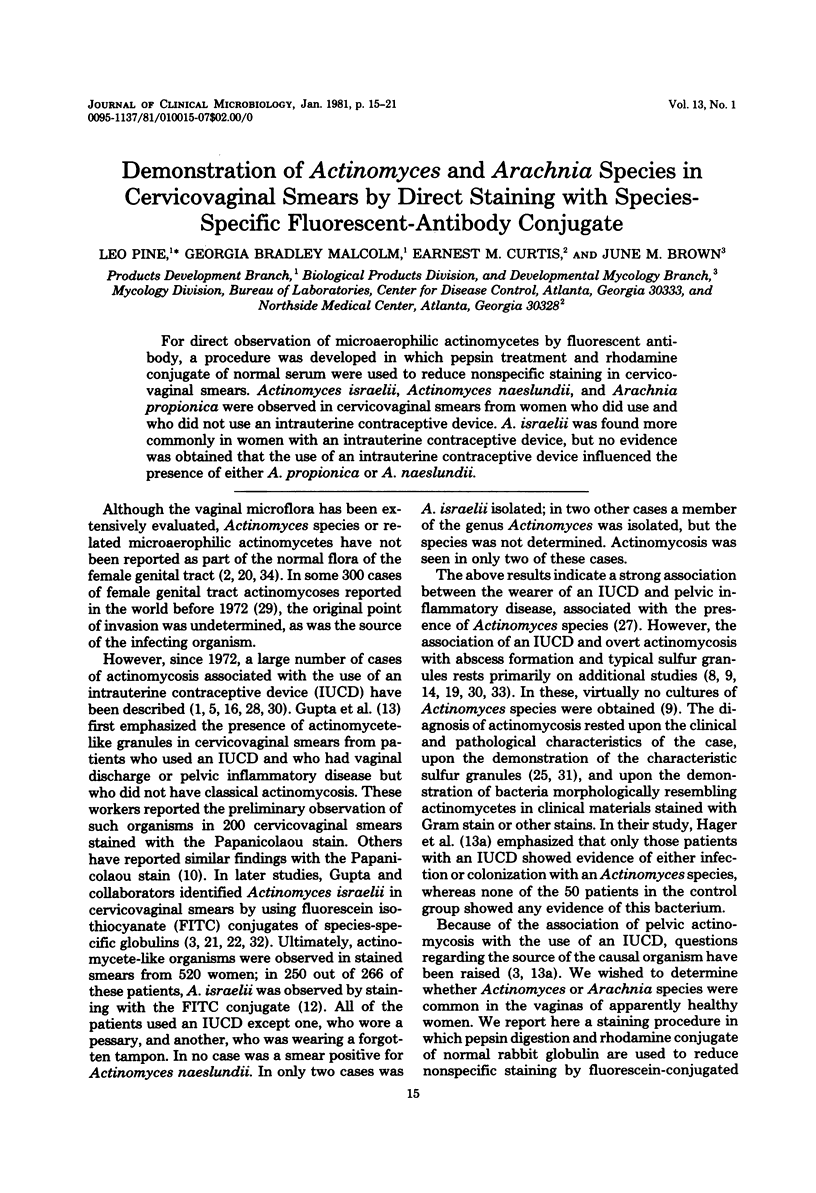
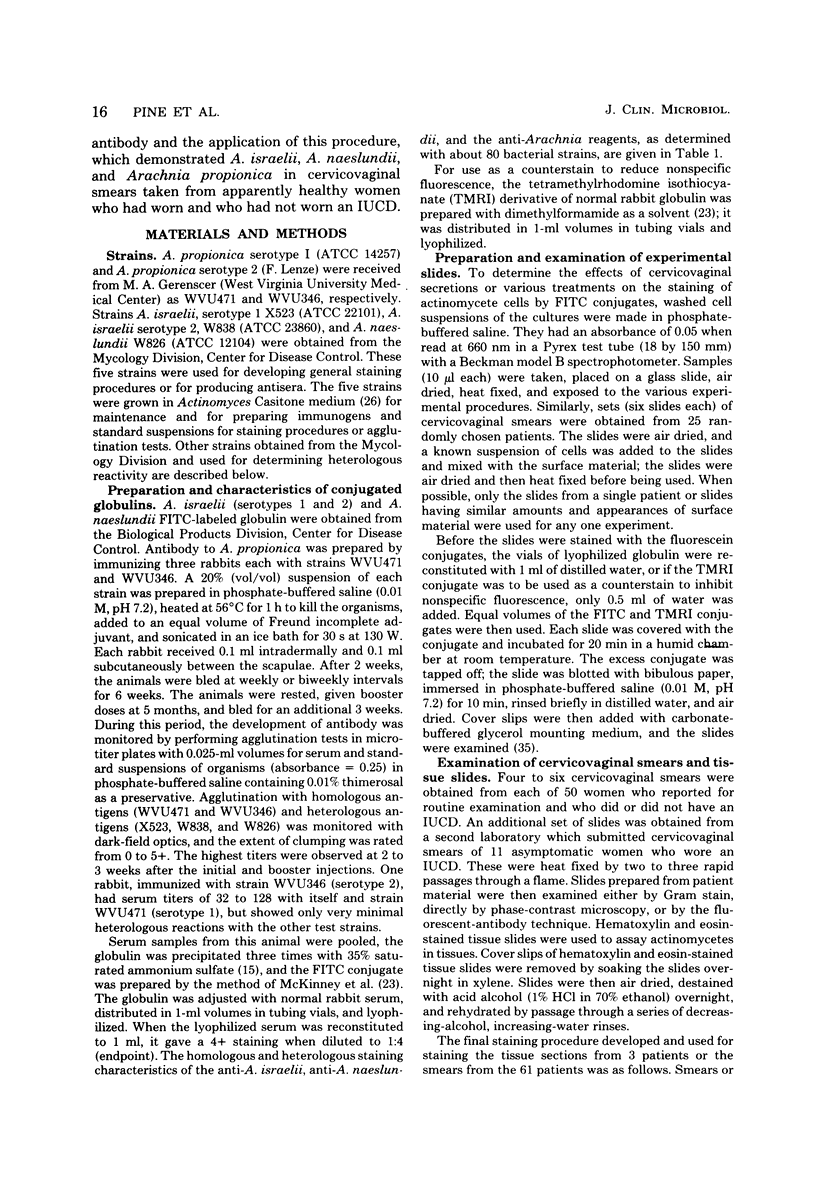
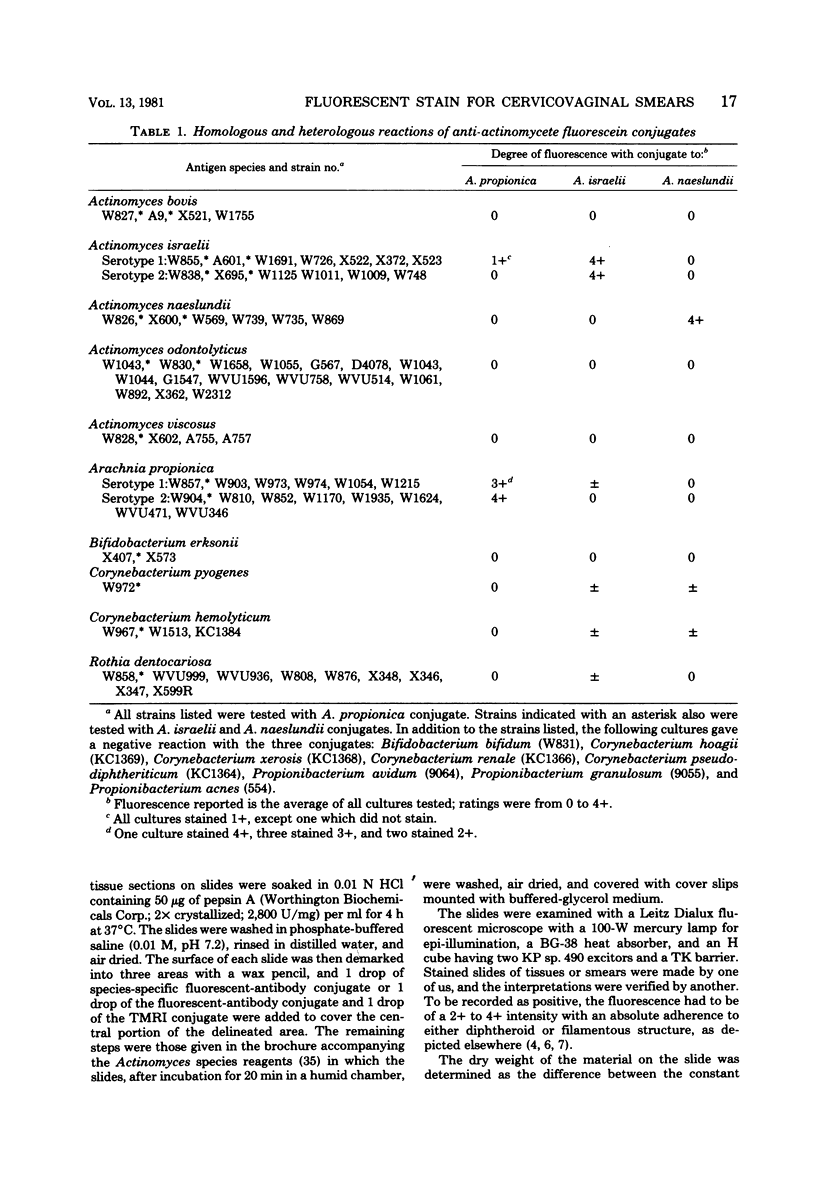
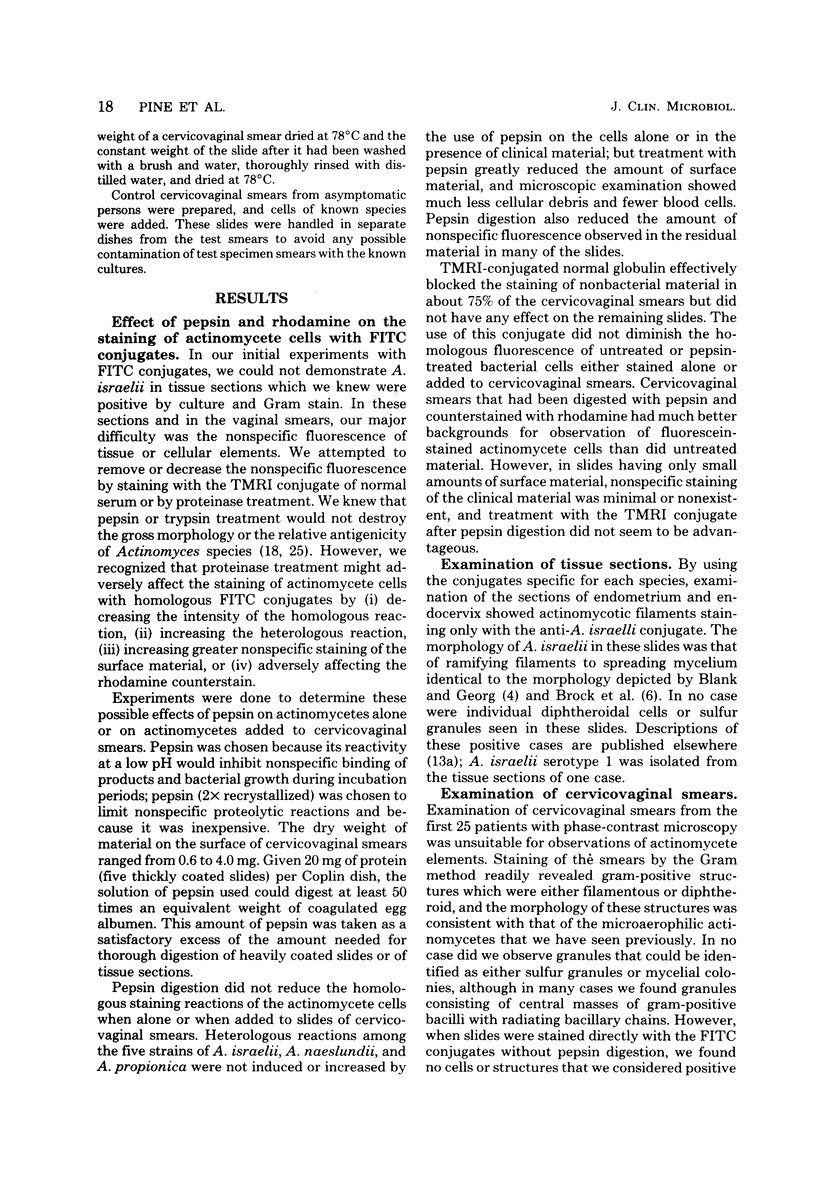
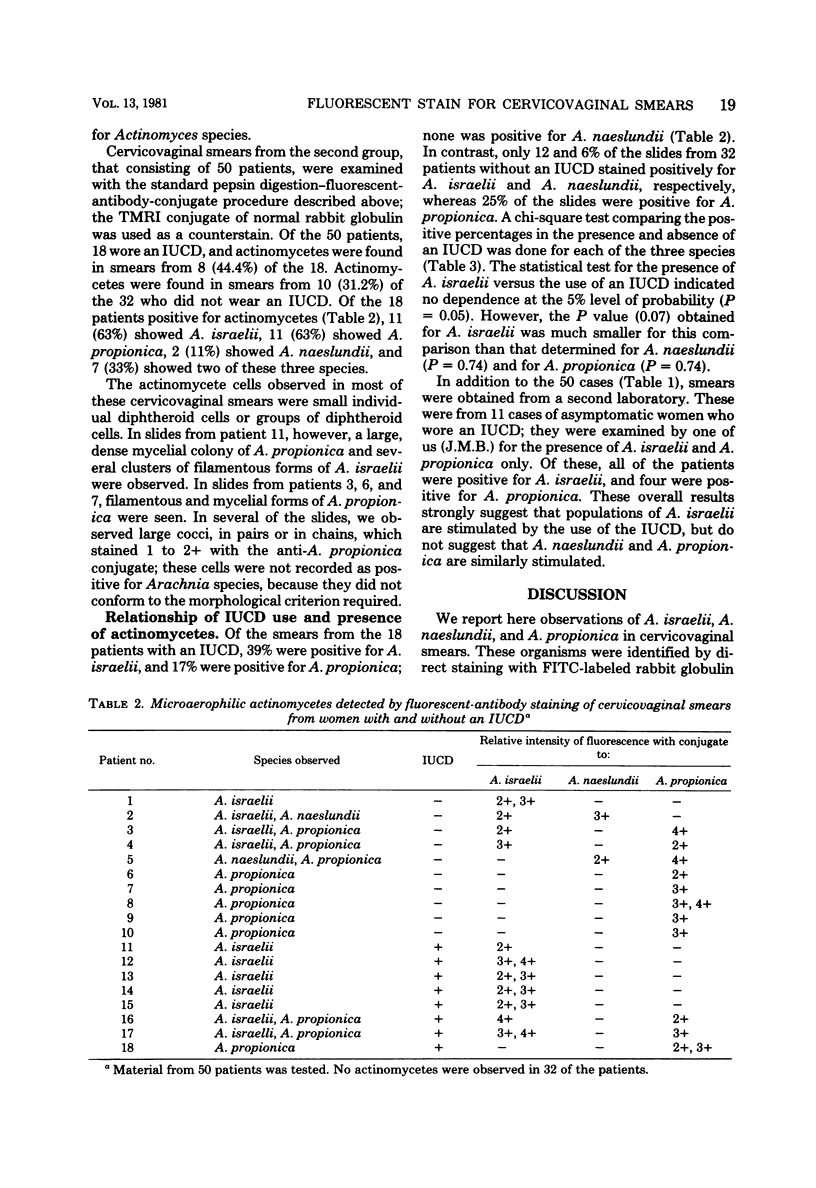
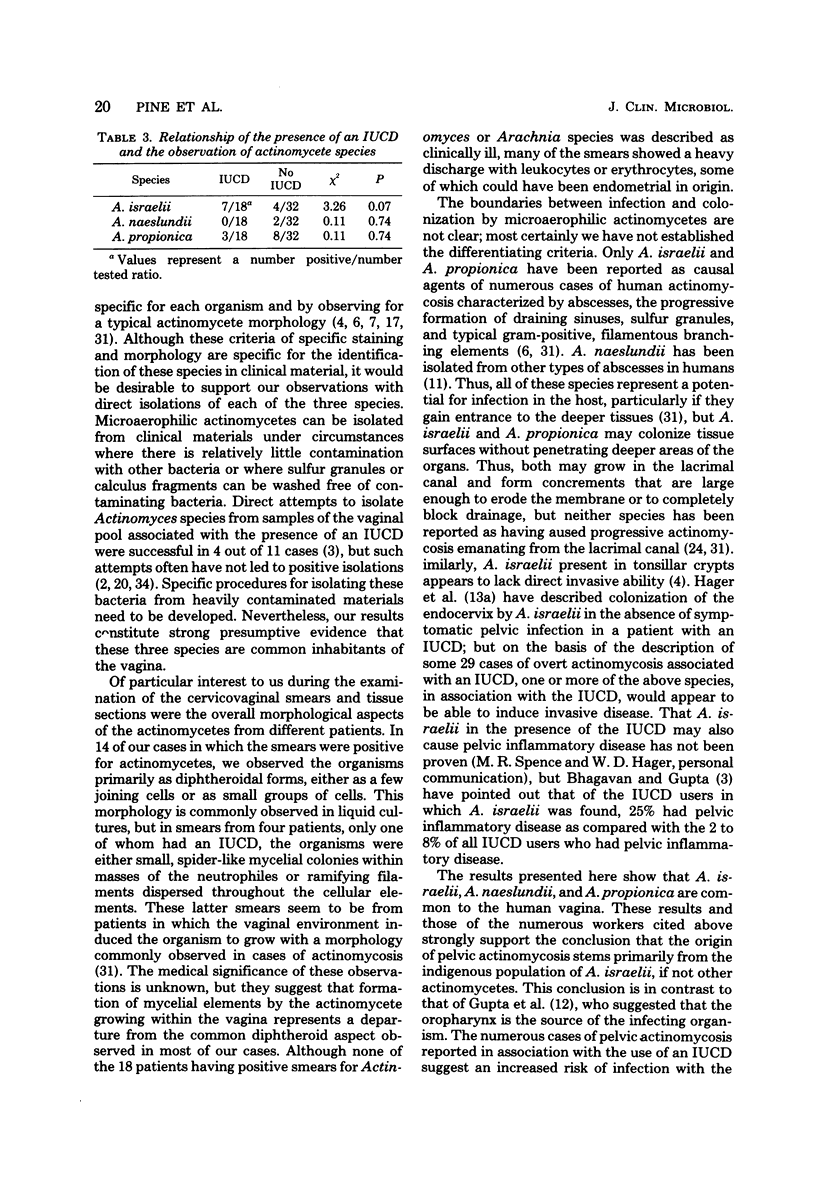
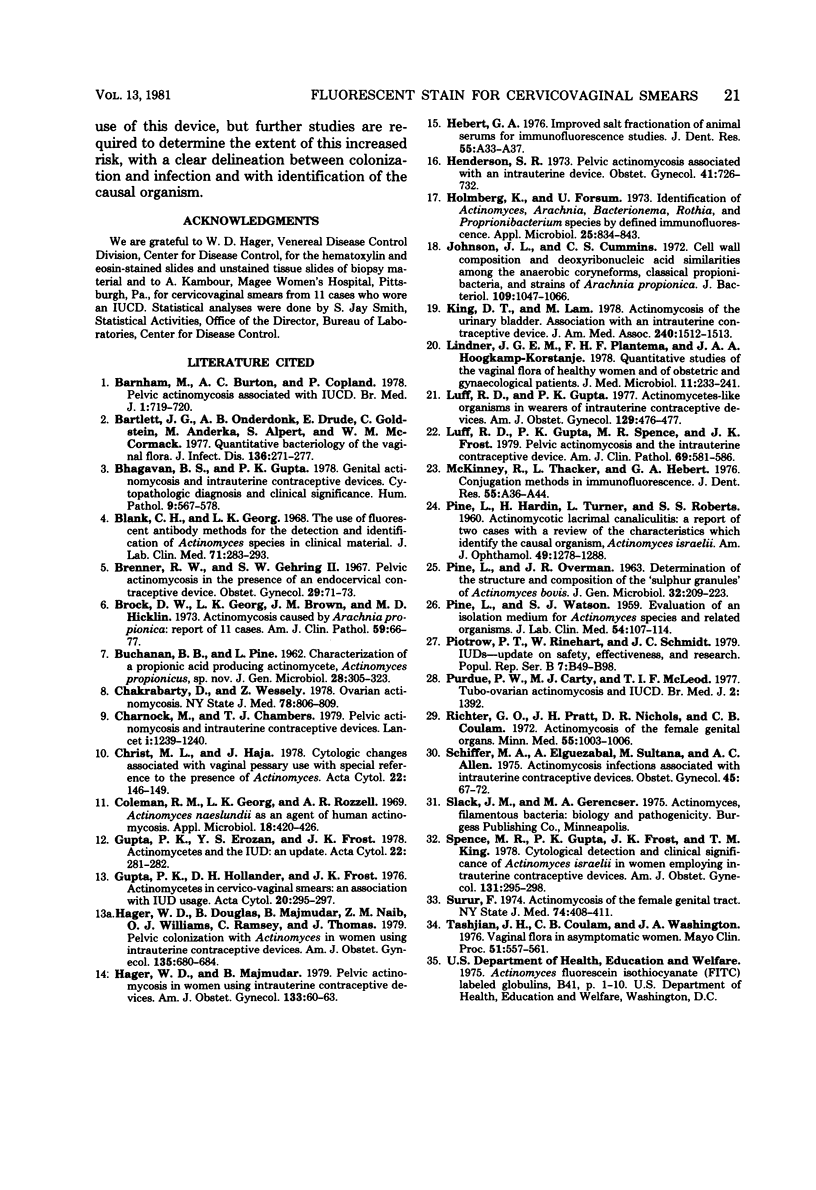
Selected References
These references are in PubMed. This may not be the complete list of references from this article.
- BUCHANAN B. B., PINE L. Characterization of a propionic acid producing actinomycete, Actinomyces propionicus, sp. nov. J Gen Microbiol. 1962 Jun;28:305–323. doi: 10.1099/00221287-28-2-305. [DOI] [PubMed] [Google Scholar]
- Barnham M., Burton A. C., Copland P. Pelvic actinomycosis associated with IUCD. Br Med J. 1978 Mar 18;1(6114):719–720. doi: 10.1136/bmj.1.6114.719-b. [DOI] [PMC free article] [PubMed] [Google Scholar]
- Bartlett J. G., Onderdonk A. B., Drude E., Goldstein C., Anderka M., Alpert S., McCormack W. M. Quantitative bacteriology of the vaginal flora. J Infect Dis. 1977 Aug;136(2):271–277. doi: 10.1093/infdis/136.2.271. [DOI] [PubMed] [Google Scholar]
- Bhagavan B. S., Gupta P. K. Genital actinomycosis and intrauterine contraceptive devices. Cytopathologic diagnosis and clinical significance. Hum Pathol. 1978 Sep;9(5):567–578. doi: 10.1016/s0046-8177(78)80137-3. [DOI] [PubMed] [Google Scholar]
- Brenner R. W., Gehring S. W., 2nd Pelvic actinomycosis in the presence of an endocervical contraceptive device. Report of a case. Obstet Gynecol. 1967 Jan;29(1):71–73. [PubMed] [Google Scholar]
- Brock D. W., Georg L. K., Brown J. M., Hicklin M. D. Actinomycosis caused by Arachnia propionica: report of 11 cases. Am J Clin Pathol. 1973 Jan;59(1):66–77. doi: 10.1093/ajcp/59.1.66. [DOI] [PubMed] [Google Scholar]
- Chakrabarty D., Wessely Z. Ovarian actinomycosis. N Y State J Med. 1978 Apr;78(5):806–809. [PubMed] [Google Scholar]
- Charnock M., Chambers T. J. Pelvic actinomycosis and intrauterine contraceptive devices. Lancet. 1979 Jun 9;1(8128):1239–1240. doi: 10.1016/s0140-6736(79)91917-2. [DOI] [PubMed] [Google Scholar]
- Christ M. L., Haja J. Cytologic changes associated with vaginal pessary use. With special reference to the presence of Actinomyces. Acta Cytol. 1978 May-Jun;22(3):146–149. [PubMed] [Google Scholar]
- Coleman R. M., Georg L. K., Rozzell A. R. Actinomyces naeslundii as an agent of human actinomycosis. Appl Microbiol. 1969 Sep;18(3):420–426. doi: 10.1128/am.18.3.420-426.1969. [DOI] [PMC free article] [PubMed] [Google Scholar]
- Gupta P. K., Erozan Y. S., Frost J. K. Actinomycetes and the IUD: an update. Acta Cytol. 1978 Sep-Oct;22(5):281–282. [PubMed] [Google Scholar]
- Gupta P. K., Hollander D. H., Frost J. K. Actinomycetes in cervico-vaginal smears: an association with IUD usage. Acta Cytol. 1976 Jul-Aug;20(4):295–297. [PubMed] [Google Scholar]
- Hager W. D., Douglas B., Majmudar B., Naib Z. M., Williams O. J., Ramsey C., Thomas J. Pelvic colonization with Actinomyces in women using intrauterine contraceptive devices. Am J Obstet Gynecol. 1979 Nov 1;135(5):680–684. doi: 10.1016/s0002-9378(16)32995-7. [DOI] [PubMed] [Google Scholar]
- Hager W. D., Majmudar B. Pelvic actinomycosis in women using intrauterine contraceptive devices. Am J Obstet Gynecol. 1979 Jan 1;133(1):60–63. doi: 10.1016/0002-9378(79)90413-7. [DOI] [PubMed] [Google Scholar]
- Hebert G. A. Improved salt fractionation of animal serums for immunofluorescence studies. J Dent Res. 1976 Jan;55:A33–A37. doi: 10.1177/002203457605500116011. [DOI] [PubMed] [Google Scholar]
- Henderson S. R. Pelvic actinomycosis associated with an intrauterine device. Obstet Gynecol. 1973 May;41(5):726–732. [PubMed] [Google Scholar]
- Holmberg K., Forsum U. Identification of Actinomyces, Arachnia, Bacterionema, Rothia, and Propionibacterium species by defined immunofluorescence. Appl Microbiol. 1973 May;25(5):834–843. doi: 10.1128/am.25.5.834-843.1973. [DOI] [PMC free article] [PubMed] [Google Scholar]
- Johnson J. L., Cummins C. S. Cell wall composition and deoxyribonucleic acid similarities among the anaerobic coryneforms, classical propionibacteria, and strains of Arachnia propionica. J Bacteriol. 1972 Mar;109(3):1047–1066. doi: 10.1128/jb.109.3.1047-1066.1972. [DOI] [PMC free article] [PubMed] [Google Scholar]
- King D. T., Lam M. Actinomycosis of the urinary bladder. Association with an intrauterine contraceptive device. JAMA. 1978 Sep 29;240(14):1512–1513. [PubMed] [Google Scholar]
- Lindner J. G., Plantema F. H., Hoogkamp-Korstanje J. A. Quantitative studies of the vaginal flora of healthy women and of obstetric and gynaecological patients. J Med Microbiol. 1978 Aug;11(3):233–241. doi: 10.1099/00222615-11-3-233. [DOI] [PubMed] [Google Scholar]
- Luff R. D., Gupta P. K. Actinomycetes-like organisms in wearers of intrauterine contraceptive devices. Am J Obstet Gynecol. 1977 Oct 15;129(4):476–477. doi: 10.1016/0002-9378(77)90611-1. [DOI] [PubMed] [Google Scholar]
- Luff R. D., Gupta P. K., Spence M. R., Frost J. K. Pelvic actinomycosis and the intrauterine contraceptive device. A cyto-histomorphologic study. Am J Clin Pathol. 1978 Jun;69(6):581–586. doi: 10.1093/ajcp/69.6.581. [DOI] [PubMed] [Google Scholar]
- McKinney R., Thacker L., Hebert G. A. Conjugation methods in immunofluorescence. J Dent Res. 1976 Jan;55:A38–A44. doi: 10.1177/002203457605500117011. [DOI] [PubMed] [Google Scholar]
- PINE L., HARDIN H., TURNER L., ROBERTS S. S. Actinomycotic lacrimal canaliculitis. A report of two cases with a review of the characteristics which identify the causal organism. Actinomyces israelii. Am J Ophthalmol. 1960 Jun;49:1278–1288. [PubMed] [Google Scholar]
- PINE L., OVERMAN J. R. DETERMINATION OF THE STRUCTURE AND COMPOSITION OF THE 'SULPHUR GRANULES' OF ACTINOMYCES BOVIS. J Gen Microbiol. 1963 Aug;32:209–223. doi: 10.1099/00221287-32-2-209. [DOI] [PubMed] [Google Scholar]
- PINE L., WATSON S. J. Evaluation of an isolation and maintenance medium for Actinomyces species and related organisms. J Lab Clin Med. 1959 Jul;54(1):107–114. [PubMed] [Google Scholar]
- Purdie D. W., Carty M. J., McLeod T. I. Tubo-ovarian actinomycosis and the IUCD. Br Med J. 1977 Nov 26;2(6099):1392–1392. doi: 10.1136/bmj.2.6099.1392. [DOI] [PMC free article] [PubMed] [Google Scholar]
- Richter G. O., Pratt J. H., Nichols D. R., Coulam C. B. Actinomycosis of the female genital organs. Minn Med. 1972 Nov;55(11):1003–1006. [PubMed] [Google Scholar]
- Schiffer M. A., Elguezabal A., Sultana M., Allen A. C. Actinomycosis infections associated with intrauterine contraceptive devices. Obstet Gynecol. 1975 Jan;45(1):67–72. [PubMed] [Google Scholar]
- Spence M. R., Gupta P. K., Frost J. K., King T. M. Cytologic detection and clinical significance of Actinomyces israelii in women using intrauterine contraceptive devices. Am J Obstet Gynecol. 1978 Jun 1;131(3):295–298. doi: 10.1016/0002-9378(78)90604-x. [DOI] [PubMed] [Google Scholar]
- Tashjian J. H., Coulam C. B., Washington J. A., 2nd Vaginal flora in asymptomatic women. Mayo Clin Proc. 1976 Sep;51(9):557–561. [PubMed] [Google Scholar]


